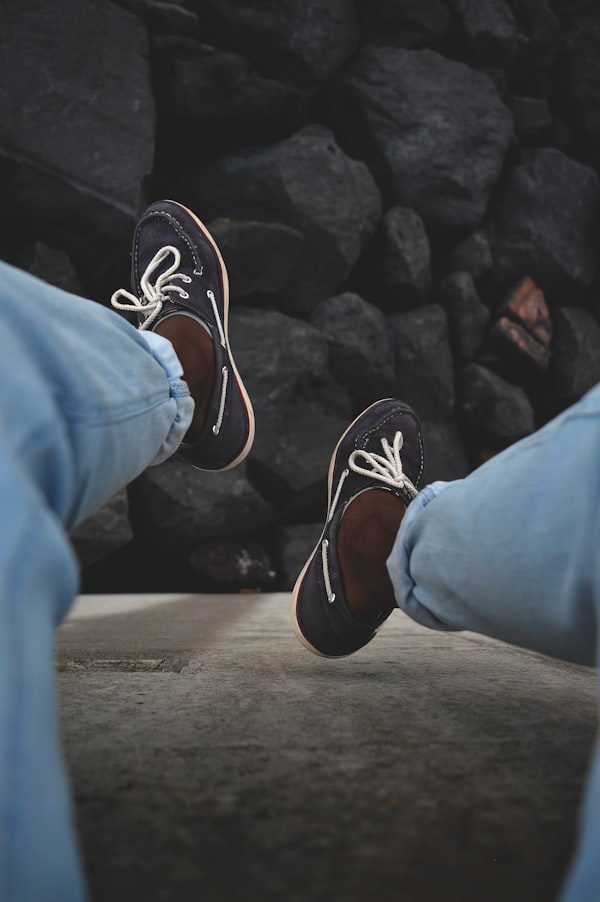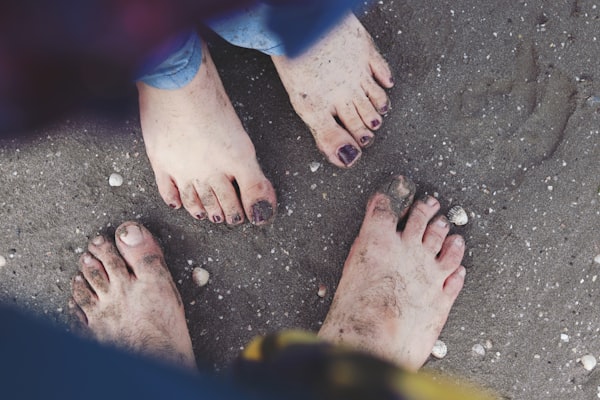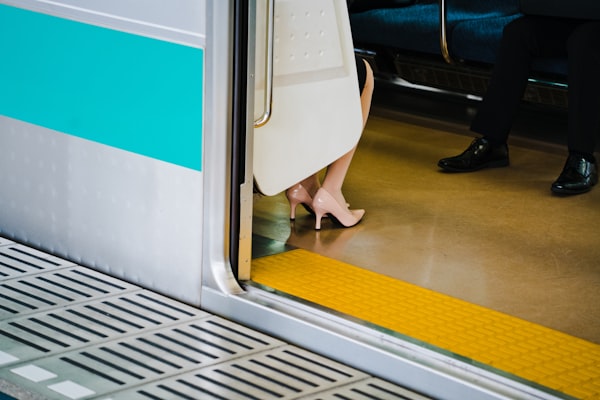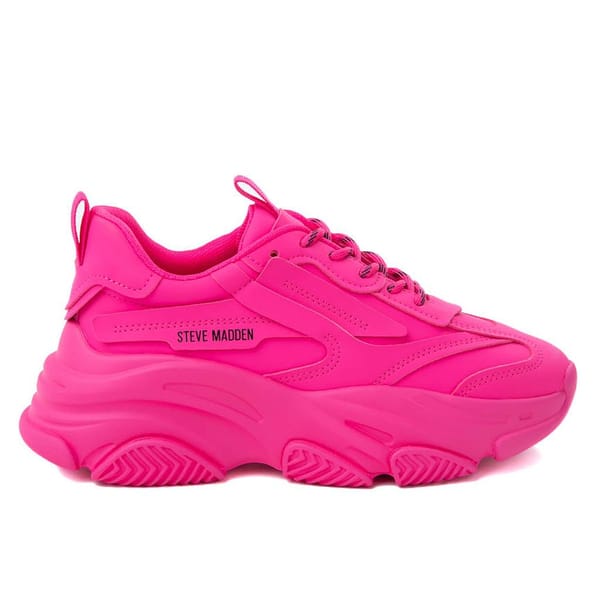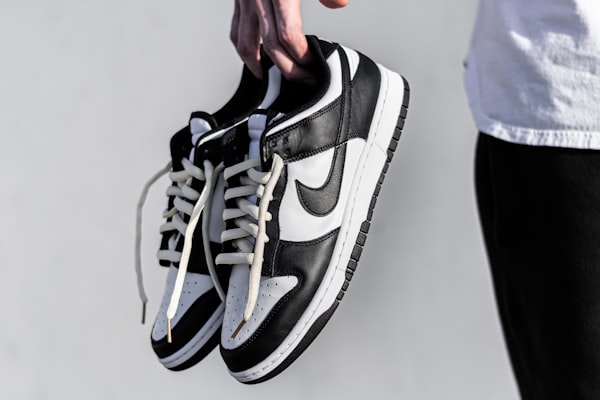Do you have a love-hate relationship with your canvas shoes? One day they fit perfectly, and the next, they feel like they've shrunk two sizes. It's a frustrating experience, but the real question is, do canvas shoes stretch?
Today we'll get to the bottom of this mystery and uncover the truth about whether canvas shoes have any stretchability. We'll explore the science behind canvas shoes, including their materials and how they're constructed, to determine if they really stretch.
By the end, you'll clearly understand the factors that influence canvas shoe stretching, and you'll have practical tips to keep your canvas shoes fitting perfectly.
So, let's get to it and unravel the mystery of canvas shoe stretching!
The Science of Canvas Shoes
To understand the stretching potential of canvas shoes, first, the materials and construction techniques used in making them are essential. Canvas shoes are constructed from a variety of fabrics, and the way they're put together can significantly affect their elasticity. Let's explore the science of canvas shoes and how different factors contribute to their stretching potential.
1. Materials Used in Canvas Shoes
Canvas shoes are made from various fabrics for comfort, durability, and style. The most common material used in canvas shoes is canvas, a plain-woven fabric typically made from cotton, linen, or hemp. Canvas is a popular shoe choice because it's breathable, lightweight, and easy to dye in various colors. Other materials used in canvas shoes include synthetic fibers like polyester or nylon, which can enhance the shoe's durability and water resistance.
In addition to materials used for the shoe's upper, the sole can also play a role in its stretching potential. For example, many canvas shoes have rubber soles, which can provide good traction and durability but don't offer much flexibility. Other shoes may have more flexible soles made from gum rubber, which can help the shoe conform to the wearer's foot and increase its stretching potential.
2. Construction Techniques Used in Canvas Shoes
The way that canvas shoes are constructed has a significant impact on their stretching potential. Several construction techniques are employed to make canvas shoes, each with strengths and weaknesses.
One standard construction method is vulcanization, which involves bonding the canvas upper to a rubber sole using heat and pressure. This method creates a durable and long-lasting shoe but can also result in a shoe that doesn't stretch much.
Another construction method is strobel, which involves stitching the canvas upper to the shoe's sole using a flexible material like nylon or Kevlar. This method creates a more flexible shoe with more give, making it more comfortable and easier to break in.
A third construction method is the use of a last, a mold or model of a foot used to shape the shoe during production. Shoes made using a last can have a more precise fit and may stretch more evenly over time, molding to fit the foot's contours.
Understanding the science of canvas shoes is vital to understanding whether or not they will stretch. By knowing the materials and construction techniques, you'll be better equipped to make informed decisions when selecting canvas shoes. Whether you're looking for a pair that has some give or you want a pair that will maintain its shape, understanding the science of canvas shoes is an essential step toward finding the perfect fit.
Factors that Influence Canvas Shoe Stretching
The materials used in the shoe's construction, the construction technique itself, and the shoe's design are all factors that can impact its stretching potential. So let's dive into the specifics of factors contributing to a shoe's stretching potential.
1. The Type of Canvas Material Used
The type of canvas material used to make a shoe is a crucial factor affecting its stretching potential. Canvas is a sturdy and durable material commonly made from cotton, linen, or a blend of both. Cotton canvas is a popular shoe choice, as it is breathable, comfortable, and has some give, making it more likely to stretch over time. On the other hand, Linen canvas is a more lightweight and breathable option that may have even more give than cotton, but it is not as durable.
There are several types of canvas weaves used in making shoes. For example, a plain weave is a simple over-under pattern that creates a flat, uniform fabric. This type of weave may not have much give, making it less likely to stretch over time. On the other hand, a twill weave has a more diagonal pattern that creates a more textured and durable fabric. This type of weave may have more give than a plain weave, making it more likely to stretch.
Another type of canvas material used in shoes is duck canvas, a heavy, tightly-woven material known for its durability and strength. In addition, this type of canvas may be less likely to stretch due to its weight and stiffness, making it a good choice for shoes that need to hold their shape and provide support.
In addition to the type of canvas material used, the thickness of the material can also impact its stretching potential. Thicker canvas may be less likely to stretch than thinner canvas, as it is less flexible and has less give. However, thicker canvas may also be more durable and long-lasting, making it a good choice for shoes with a lot of wear and tear.
2. The Shoe's Design and Construction
The design and construction of a canvas shoe can significantly affect how much it will stretch over time.
A shoe with a narrow or pointed toe box may be less likely to stretch than a wider or rounded toe box. This is because a narrow or pointed-toe box can restrict the foot's movement and put pressure on the toes, which can cause the shoe to wear in a specific way and make it less likely to stretch. On the other hand, a shoe with a wider or rounded toe box can allow more room for the foot to move and flex, making it more likely to stretch over time.
The amount of room in the vamp, or the shoe's upper part that covers the foot can also impact the shoe's stretching potential. For example, a shoe with a tight or narrow vamp may be less likely to stretch than a wider or more flexible one. This is because a tight or narrow vamp can restrict the foot's movement and make it more difficult for the shoe to stretch and conform to the foot's shape.
The construction technique used in making the shoe can also affect its stretching potential. For example, shoes made with a last, a mold used to shape the shoe, may be more likely to stretch than shoes not made with a last. This is because the last can help shape the shoe and create a more customized fit, making the shoe more comfortable and more likely to stretch over time.
The type of sole used in the shoe can also impact its stretching potential. Soles made from more flexible materials, such as rubber or crepe, are more likely to stretch than soles made from more rigid materials like leather or synthetic materials. The flexibility of the sole can also impact how much the shoe will bend and flex during wear, which can contribute to the shoe's overall stretching potential.
The design of the shoe's upper, including any seams or overlays, can also impact its stretching potential. Shoes with fewer seams and overlays may be more likely to stretch than shoes with more seams and overlays, as the extra stitching and material can restrict the shoe's ability to stretch and flex.
3. The Amount of Wear and Tear the Shoe Has Experienced
The amount of wear and tear a canvas shoe has experienced can also affect its stretching potential. Shoes worn extensively may be more likely to stretch than new shoes, as the canvas material can loosen and mold to the shape of the wearer's foot over time. However, shoes subjected to excessive wear and tear may also be more likely to develop holes or other damage affecting their fit and comfort.
The type of activities performed in shoes can also impact their stretching potential. For example, shoes worn for activities that require a lot of bending and flexing, such as running or hiking, may be more likely to stretch than shoes worn for more sedentary activities, such as walking or standing. This is because the repetitive motion of these activities can cause the canvas material to stretch and loosen over time.
In addition, the care and maintenance of the shoes can also affect their stretching potential. Shoes not cared for properly (i.e., not cleaned or conditioned regularly) may be more likely to dry out and become stiff, making them less likely to stretch. Shoes exposed to extreme temperatures or moisture may also be more likely to stretch or develop other types of damage.
While canvas shoes can be a comfortable and stylish choice for footwear, their stretching potential is an essential factor to consider when choosing a pair. By understanding the shoe's materials, construction techniques, and design, you can make an informed decision about which shoes are likely to stretch more and which will be more rigid. So whether you're looking for a pair of shoes that will fit comfortably from day one or a pair that will break in over time, understanding the factors that influence canvas shoe stretching can help you find the perfect pair of shoes.
Tips for Keeping Your Canvas Shoes Fitting Perfectly
Canvas shoes are a comfortable and stylish choice for footwear, but they can stretch out or lose shape over time. If you want to keep your canvas shoes fitting perfectly, there are a few tips you can follow to maintain their shape and prevent stretching.
Breaking in New Canvas Shoes
Breaking in new canvas shoes can be a challenging experience, as the shoes may initially feel tight or uncomfortable. However, with a little bit of patience and effort, you can help speed up the break-in process and make your shoes feel comfortable in no time.
One way to break in new canvas shoes is to wear them for short periods each day, gradually increasing the time you wear them as they become more comfortable. You can also try wearing thicker socks or using shoe inserts to help cushion your feet and reduce discomfort or rubbing.
Another tip for breaking in new canvas shoes is to stretch them out gently before wearing them for long periods. You can do this by wearing the shoes with thick socks, heating them with a hairdryer, then flexing and bending them to help loosen the canvas material. You can also try stuffing the shoes with newspaper or a soft cloth to help stretch them out overnight.
Storing Canvas Shoes Properly
Properly storing your canvas shoes can help maintain their shape and prevent them from being stretched or damaged over time. Here are a few tips to keep in mind when storing your canvas shoes:
- Keep Them Clean and Dry: Before storing your canvas shoes, ensure they are clean and dry. Remove any dirt or debris, and allow the shoes to air out for a few hours if damp or sweaty. This can help to prevent mold or mildew from forming and damaging the shoes.
- Store Them in A Cool, Dry Place: Avoid storing your canvas shoes in a humid or hot environment, such as a basement or attic. Instead, keep them in a cool, dry place that is well-ventilated. This can help to prevent the canvas material from becoming damaged or discolored over time.
- Use Shoe Trees or Stuff Them with Newspaper: To help your canvas shoes maintain their shape, you can use shoe trees or stuff them with newspaper when storing them. This can help to prevent the shoes from becoming misshapen or developing creases.
- Store Them in A Shoe Bag or Box: To protect your canvas shoes from dust and other debris, store them in a shoe bag or box when they are not in use. This can also help to prevent the shoes from becoming scratched or damaged.

Cleaning and Maintaining Canvas Shoes to Prevent Stretching
Cleaning and maintaining your canvas shoes is essential for avoiding stretching and prolonging the lifespan of your shoes. Here are some tips to keep your canvas shoes in good condition:
- Clean Your Shoes Regularly: Canvas shoes are prone to dirt and stains, so it is essential to clean them regularly. Use a soft brush or cloth to remove dirt or debris from the shoes. Mix a small amount of mild soap with water for stubborn stains and gently scrub the affected area.
- Air Dry Your Shoes: Do not put your canvas shoes in the dryer or expose them to direct sunlight to dry. Instead, allow your shoes to dry naturally in a cool, dry place. Stuffing them with newspaper or a towel can help absorb moisture and maintain their shape while they dry.
- Apply a Fabric Protectant: A fabric protectant can help to prevent water and stains from damaging your canvas shoes. Apply the protectant to your shoes before wearing them for the first time, and reapply periodically.

By following these simple tips, you can keep your canvas shoes looking great and prevent them from stretching out over time. In addition, regular cleaning and maintenance, as well as proper storage and shoe inserts, can help keep your canvas shoes in excellent condition for years to come.
On a Final Note
So there you have it - the answer to the age-old question, "Do canvas shoes stretch?" It all depends on various factors, including the type of canvas material used, the shoe's design and construction, and the amount of wear and tear the shoe has experienced.
But fear not. With some knowledge and simple maintenance tips, you can keep your canvas shoes fitting perfectly for years to come.
And who knows, with the proper care and attention, maybe your trusty canvas kicks will become a beloved family heirloom, passed down from generation to generation. Or, you know, you could wear them until they fall apart.
Related Articles








